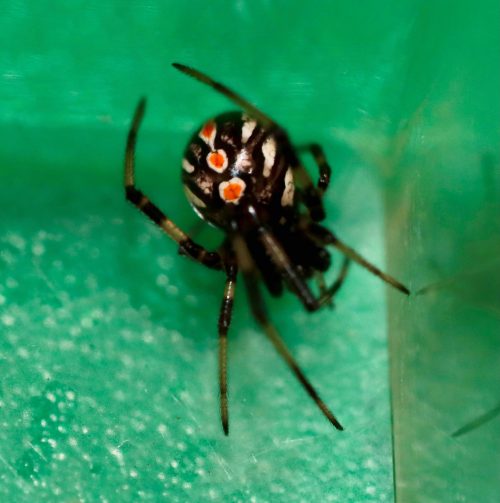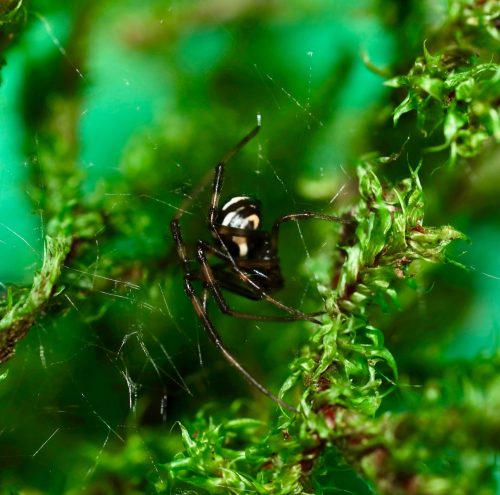You probably assume you can recognize black widows by the red hourglass on the underside, like this:
But the juveniles and other variant forms can look like this:
And you might as well give up, because in their natural environment they may not pose obligingly for you.
Those are all young’uns, the spawn of the few adults I got this summer. They’re thriving!





Not Black Widows specifically but I’ve never noticed a red back spider Latrodectus hasselti a.k.a. Australian Black Widow ( https://en.wikipedia.org/wiki/Redback_spider ) that lacks that hourglass in red on the abdomen personally and seen a lot of them. Albiet not always for very long so perhaps I missed those without? They do have a bite that can make you pretty crook so I gather and whilst I generally get along happily with spiders and relocate them – huntsmen esp; the redbacks are an exception despite giving their name to our state cricket XI.
Good to keep in mind. I’ve found a couple definite black widows with the unmistakable red hourglass in my pool skimmer over the years. The first I caught for my daughter, as she was building a bug collection at the time. The second I caught and moved to a different corner of the yard where I wouldn’t be shoving my hand in on a regular basis. But I guess now I know to be on the lookout for the overall body shape, not just the hourglass.
I identify black widows—the female variety—by the large bulbous shiny black body and long shiny black legs. You don’t always see the belly where the markings are. They give me a chill every time I spot one.
Michael Behe has contributed two significant studies on what he has termed “irreducible complexity”. You just knew that that was going to be in there.
Isn’t this how various SF cheap horror movies begin? An outbreak of modified spiders takes over a small college town in the countryside, and suddenly we have to preserve the cat at all costs.
Seriously though, are very pretty, shiny spiders. I’m not surprised that immature spiderlings don’t display the same coloration as adults. I wonder if they blend into their environments a little better, and the all black color ones fell prey to cannibalism?
That kind of coloration isn’t for blending, but for warning.
https://www.abc.net.au/news/2024-02-17/eastern-brown-snake-caught-in-redback-spiders-web/103479010
Are these the spiderlings that are in the cage with their Mom, or individuals in their own vials?
I don’t know if a hungry sibling can see the warning, but it seems reasonable to suppose that a variegated individual would blend in with its surroundings better than the typical black and red coloration, and thus survive cannibalism better in its artificial environment. I expect the babies would disperse upon hatching if allowed.
I live on the top floor of a two-story apartment building and there has been a black widow outside the hallway window in the corner of the overhang all summer. It has eaten at least six June bugs that have flown into its web and grown rather large. Four days ago, I saw a praying mantis on the window about a meter from her web and idly wondered which would win in a conflict. I now have my answer because yesterday the mantis was back on the window about a quarter of a meter from where the black widow was and no sign of her. She did produce an egg sac three weeks ago and it was gone about two weeks later, so I think those juicy June bugs are now dispersed via spiderlings and a well-fed mantis.